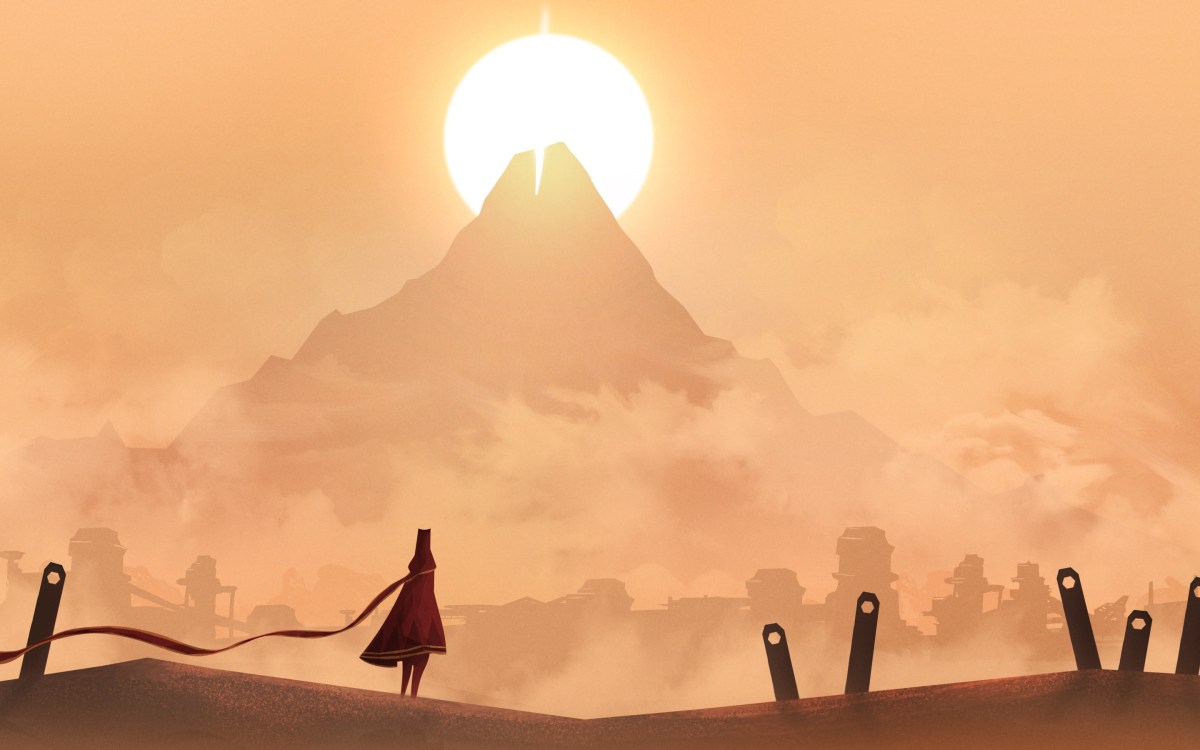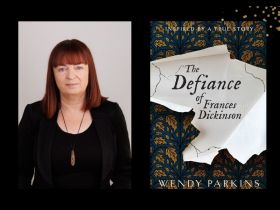I am not interested in gaming. That might sound strange coming from someone who has, every day for the past 25 years, devoted endless hours to supporting, celebrating, and being educated/inspired by the artform that happens to be at gaming’s heart — interactive art. Let’s start there.
‘Game’ — The name this medium still goes by today, is an objectively inaccurate description. A word that immediately conjures a child’s toy or pastime, no less.
I believe you would agree that naming an entire artform after a single genre within that artform — that being titles specifically geared towards recreation, distraction and competition — is as absurd as calling The Shining ‘a masterpiece of comedy’, or Blade Runner ‘one of the finest westerns ever made.’
The earliest films kept their nascent, unproven and untested medium afloat by initially pandering to humanity’s basest traits: voluptuous women, musclebound men, exaggerated facial expression, explosions — all forms of clownish, outlandish, attention-grabbing hijinks. The Fortnites and Fall Guys of the 1920s, if you will. It was low-brow, but at the time, it worked.
But eventually film used the platform it built with that era of its lifespan to shoulder its way upward, past ever-revered music and theatre, taking centre stage as the artform, for crowds and critics alike. It’s crass, basic, original form became an itchy shell, one which it eventually shed — leading to a surge of nuanced, timeless masterpieces created in the 40s, 50s, and in every decade since.
I believe interactive has now reached a similar threshold. Just as film was in the 1930s, when vaudeville-style antics began to fade in popularity, film eventually grew up. It is time for interactive to do the same.
In my 2021 Melbourne International Games Week (MIGW) presentation, I talked about devoting all three of my creative outlets — art, media and story — towards bringing about interactive’s maturation and evolution, from pastime to artform.
I don’t know about you folks, but I love interactive enough to not want it to settle. The same way you want the best for your partner, encouraging them to challenge themselves to become better, I passionately devote myself to encouraging interactive to step into its as-yet-untapped fullest potential.
I want the ideal timeline from here: The one where this medium’s industry-wide maturation/evolution, from pastime to artform, from dormant to dominant — actually comes true.
But, it’s important to do a reality check. As things stand today, even though we’ve seen some emerge to both critical and commercial success — 2018’s God of War (an allegory for interactive shedding its base, crass past in order to become something better), 2019’s Death Stranding (a deeply personal, symbolism-rich interactive journal of a director recovering from loss and identity erasure), and 2020’s The Last of Us: Part II (a parable of, and paean to, humanity’s capacity for both love and hate) — we are starting to fall behind.
For every Horizon Zero Dawn, there are what seem to be thousands upon thousands of Valorants and Valheims, Fortnites and Fall Guys, Apexes and Overwatches. A concerning ratio, for the artform which I genuinely believe is destined to help shape humanity for the better.
Far from shedding our childhood’s pastime cocoon, we’ve snuggled deeper inside. Enshrined it. Made it our central money-making pillar.
Look I’m under no delusions — I’m a white, first world cisgender male. By no means am I saying that all of us agreeing to start calling games by a more accurate name, and universally embracing an ‘art first with commerce as the byproduct’ philosophy, will singlehandedly solve the world’s immeasurably more pressing and real problems (climate change foremost among them) — just hear me out.
I’m a big believer in energy. And not in any hippy-dippy way either. I’m talking about how we habitually direct our energetic bandwidth, our rapidly shortening attention-spans — consciously and unconsciously. And I believe that presently there are forces — certain companies, let’s say — subconsciously nudging us, ever so subtly, towards passivity. In thrall to these forces, we are 100% poised for a fall.
With each in-game micro-transaction made to these companies, we’re building our own cage, where — if we’re not careful — we risk remaining forever, perpetually ‘content with our content’. Subscribed to their games-as-a-service, making sure you get your ‘daily log- in bonus’, thrilled whenever a new skin or weapon is added to the in-game store. Happy to just consume and consume. Misusing — or heck, I’ll say it, abusing — the heart of the artform itself.
Like a powerful stallion being used in a petting zoo, interactive art has relegated itself to serving only the basest, safest of money-making bets. Personally, the notion of humanity remaining unchallenged, comatose to their own agency, is nightmarish. it’s always a struggle, isn’t it? To be taken seriously when you get onto an op-ed soapbox to say:
‘Everyone, listen to me! You might not be able to see it happening in real time around you right now, but I believe that, by all of us collectively assenting to allowing an artform whose very nature encourages free thought, empathy-deepening, and is defined by YOU taking an active role in making your own choices to be repurposed into an industry built on keeping us addicted and uninspired — I dunno, I just think it could potentially lead us to, well, a frightening Orwellian nightmarescape!’
Based on this, a victory for interactive art — specifically, being permitted to be what it truly is — would in fact be a victory for a free-thinking humanity, which refuses to become an NPC in their own story.
Choice. Agency. Individualism.
An artform with these elements built into its very foundations deserves better.
We only ever permit ourselves what we deeply believe we are worthy of, And we, and this artform, are both worthy of so much more. We are worthy of, at the very least, giving the potentially humanity- evolving potential of interactive art a chance.
WHAT THE FUTURE COULD LOOK LIKE
A ‘The Last of Us: Part II’ calibre title releasing every month? It’s possible. Staggered, relaxed seven-year development cycles. No crunch required (that’s what 2022’s MIGW talk/op-ed will be about).
A harmonious multimedia/transmedia approach to media, art and entertainment? Absolutely! We’re already seeing symptoms of this — Avatar: Frontiers of Pandora is using the same 8K CGI assets as the upcoming sequels. Imagine 2023’s Star Wars: Rogue Squadron releasing in tandem with an open-galaxy interactive title that transcends/sheds the ‘movie tie-in’, developed in tandem with the film?
Critics may disagree, but with Enter The Matrix — just as they were with The Matrix itself — the Wachowskis were ahead of their time.
A cross-media creative revolution, with different artforms interacting and integrating with one another on an unprecedented scale? Absolutely yes. Games based on albums (who wouldn’t want to play an interactive experience based on Pink Floyd’s The Dark Side of The Moon, made with the band’s full involvement?
A Planet of the Apes RPG? A Breath of the Dark Crystal? A Jodorowsky or Lynch-directed title? Last Airbender: Wild Hunt? Jurassic Park: Isolation? No Man’s Galaxy Far, Far Away? An A24 title based on The Lighthouse? A Ghost (the band) title where you play as Papa Emeritus? An adventure set in Francis Bacon’s paintings? An Aesop Rock ‘Rapper RPG’? A stop-motion, Wes Andersonesque…oh wait, that one actually exists! Harold Halibut — which looks incredible by the way.
But that’s only one of thousands upon thousands of undeveloped, so-brilliant-they-write-themselves ideas that are far, far more interesting than (apologies to Blizzard fans out there) another Overwatch or WoW.
Read: What can games tell us about girlhood
Even ‘Breath of The Neverending Story’ — heck, wouldn’t you want to fly across a photoreal Fantasia on a photoreal Luck Dragon? Or even a gorgeously animated Tim Burton-directed, Journeyesque open world adventure? (Can you tell what my favourite genre is?)
Even ONE of these hypothetical titles (I’ve included some of the pitch posts I’ve made via The Albert Chessa Podcast’s topic-specific sub-outlets) would END me to learn that it’s actually happening. But they never do.
And that is my frustration, readers.
Whenever I tune into the latest E3 or Game Awards ceremony, I truly do hold out hope that ‘the bandwidth shift’ I daydream of on a daily basis has finally happened — and yet, 80% of these showcases are still saturated with cartoonish, childish, over-flashy, same-y, safe bet stuff.
Studios are settling for profit-first products (‘the Michael Bay approach’), versus art-first masterpieces (‘the Denis Villeneuve approach’). They consistently choose back-to-back, quick fix profits versus carefully crafting a long lasting legacy.
Legacies which, if Star Wars and similar properties are any indication, end up becoming more cherished, creating more grandfathered-in brand loyalty, and subsequently making even more money in the long run than the millionth Battleborn or Borderlands anyway!
It makes. No. Sense.
What I’m proposing wouldn’t separate art and commerce — it would elevate both, as evidenced by the enduring success of God of War, recently awarded IGN’s Best Video Game of All Time, beating out GTA V.
Derrick Acosta of Mega64, an internet comedy group which often trojan-horses incredibly insightful commentary on art and entertainment, said this a few years ago (a bit of a downer, but it needed to be said):
‘I believe the age of art is over. We’re in the post-good art era. The art of the slow-burn is gone. Companies have caught on to the fact that it’s easier to make a bad game with a good trailer than simply making a good game in the first place. They bank on the fact that you’ll just move on to the next thing, distracted by the latest, newest thing on your phone. The instant gratification age is here, and it’s fucking up everything which used to be good.’
In the gaming world, I’m standing at the ‘Let’s evolve humanity and really see the potential of this artform stretch its legs’ booth, whilst the vast majority are lining up at the ‘Let’s devolve into consumer-bots’ booth. To quote Mugatu from Zoolander, I feel like I’m taking crazy pills.
But then I think to myself, ‘Surely there’s no way that I’m the only one of my kind…a hair-thin slice of the demographic pie chart: The ‘not interested in gaming/nerd/geek culture whatsoever, disdains games-as-a-service, is sick-to-death of first-person shooters, and exclusively likes works of art and adventure like The Last of Us: Part II, The Pathless and The Last Guardian?’ bracket? Maybe the reason I’m not on the chart is because the name’s too long…
Do you, too, dear reader, feel existential dread when you listen to podcasts, or visit ‘gaming’ sites, and feel like a prospector, sifting through mud for days, in the hope that a shiny golden The Order: 1886-shaped glimmer will leap out from the muck? Does it really have to be this way?
Must the Red Dead IIs and Fallen Orders forever be the rare exception, rather than the standard — or at least being slightly more commonplace?
Couldn’t we direct some of the effort spent trying to create the latest Fortnite clone towards, I don’t know, maybe finding the next Fumito Ueda, Hidetaka Miyazaki, Ken Levine, Ru Weerasuriya, or Hideo Kojima?
No? Well, it really, really felt like that for me most of the time. Honestly, folks — I wouldn’t even bother with the daily mud-sifting slog, bearing with and patiently waiting on an artform that has by far outgrown its baby clothes, if it wasn’t what I profoundly, with every fibre of me, believe it to be underneath all the Twitch Streamer Drama BS — the future of art and humanity itself.
THE ARTFOM YOU CREATE AS YOU PLAY
If you took anything away from this writing, let be this: Interactive is only medium that fundamentally requires YOU — your constant and active input as the player — for it to be what it is.
A film, series or album will play themselves, whether you’re there or not.
This gives interactive art an unrivalled capacity for intimacy with their new breed of audience: the ‘consumer-creator’ — the players, a term also used in theatre to describe those on the stage, contrasted with the audience, who merely looks on.
Suddenly, you’re not on a train, seeing images pass by, powerless to change the events of the world around you. As soon as you pick up the controller, you become the art itself. You’re no longer on the surface, consuming something in a mere few hours: you’re spending days, weeks, sometimes months or even years directly experiencing the lived stories of these characters, not merely watching them, but being them.
If that isn’t definitionally the deepest connection possible between a human being and a work of art, then what is?
Interactive has the capacity for affecting us and teaching us on a level that makes every other medium look — and this is coming from a hardcore lover of film, music and books as well — primitive by comparison.
Speaking of teaching: in educational contexts, such as Assassin’s Creed: Origin’s Discovery Tour mode, you’re no longer just reading about the ancient world: You’re in it. You are it. If that isn’t the most engaging and excited way to learn, what is?
Interactive truly shines as a launching platform for wider, deeper inquiry into various different subject matters as well, such as discovering Hindu or Norse Mythology through names like Shiva and Odin in Final Fantasy.
Even spiritual and cultural re-connection is served most effectively and powerfully in the interactive format, with titles such as Never Alone, where world-class game makers collaborated with Alaska Native storytellers and elders to create a game that delved deeply into the traditional lore of the Iñupiat people. If that isn’t the most moving way to discover more about your heritage, what is?
Interactive’s profound capacity for deepening empathy, for catalysing meaningful and lasting change across all spheres of the human experience — particularly in young minds, where lifelong traits are being shaped at all times — will continue to inspire me, and devote all three of my outlets — art, media and story — to celebrating it, and highlight its often ignored true potential.
As jaded as I find myself becoming sometimes, whenever I begin an interactive title that truly connects with me, I am transported into another world, with that same child-like, but not childish (there’s a big difference), awe I had when I first watched Star Wars or The Lord of the Rings.
That is why it is my dream that Quantumyth, my development studio, will one day craft and leave behind similarly timeless interactive parables that honour and build upon the legacy of The Abzûs that came before.
With its mere existence, interactive art challenges and revolutionises our long-held conceptions of ‘consumer’ and ‘creator’ as separate entities, paving the way to unimaginable new horizons of truly paradigm shifting art.
But its hidden potential will remain untapped, a dormant colossus, if the recreation, distraction and competition elements of gaming’s infancy are allowed to dominate the world’s highest-earning entertainment platform, unchecked and unchallenged.
This writing and presentation is my challenge to the way things are. And if its message resonated with you, we just became fast friends.
Let’s leave behind this world of extremes — 80 percent child’s play, 20 percent art — and balance it out, at the very least. Will humanity’s premiere creative frontier be defined by tremendous growth, stultifying sameness, or outright regression back into time-passing child’s play?
Like your player character, interactive’s future is yours to decide. If you ask me, the child is finally grown, has awoken to their godhood, and though we may all be in world-rebirth Ragnarök of sorts right now, beyond it a bright, promising and exciting future awaits for humanity’s most powerful — and empowering — artform ever.
The is an edited version of the keynote Patterns, Podcasts and Parables: Evolving Humanity through art from Melbourne International Games Week.





